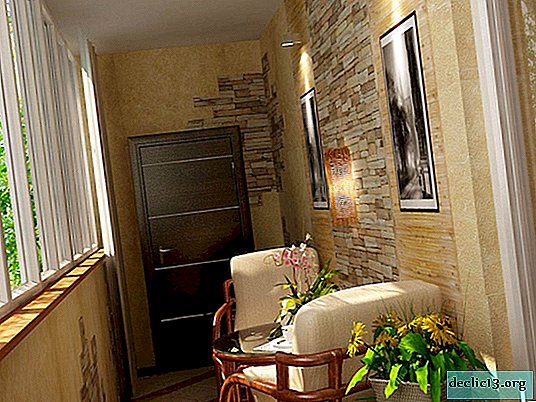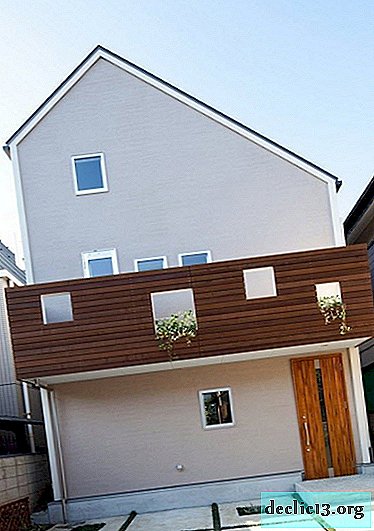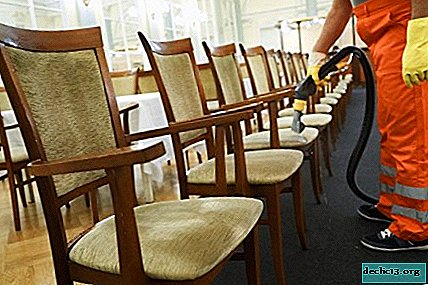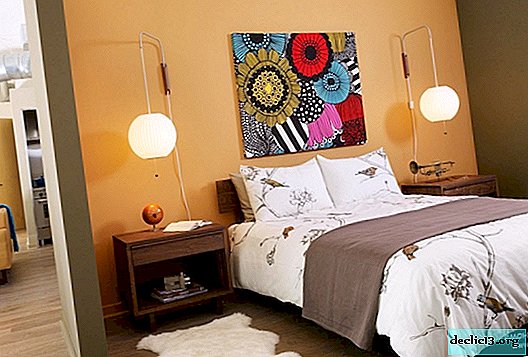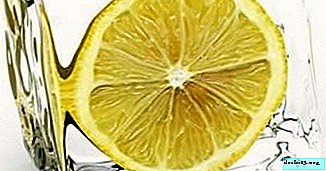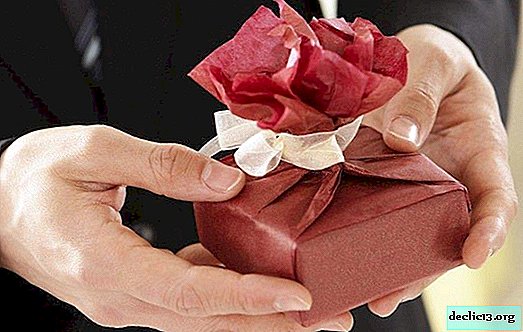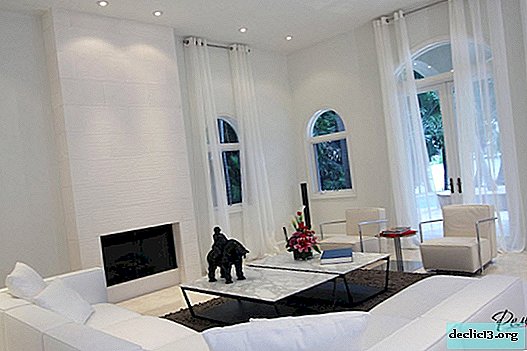Hohenschwangau Castle - "fairytale fortress" in the mountains of Germany
Hohenschwangau Castle, the name of which is translated from German as “High Swan Paradise”, is located on the picturesque alpine slopes of Bavaria. More than 4 million tourists come here annually.
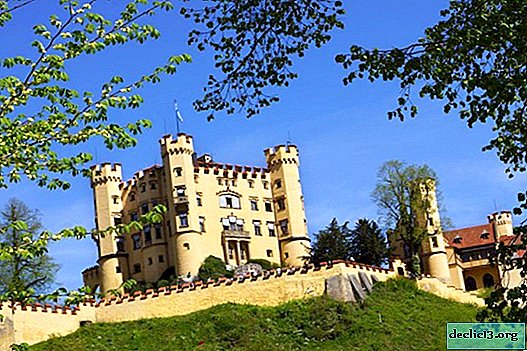
General information
Hohenschwangau Castle is located in southern Bavaria, near the city of Füssen and the German border with Austria. The mustard-colored castle is surrounded on both sides by lakes Alpsee and Schwansee, as well as a dense pine forest.
This territory of Germany for centuries has been a favorite vacation spot with the royal family and German knights, and now Hohenschwangau Castle is known as the place where Ludwig 2 was born, who built the famous Neuschwanstein Castle in the neighborhood.

The creator of Hohenschwangau Castle, Maximilian of Bavaria (Ludwig's father 2), called it “Fairy Castle” and “Fairytale Fortress”, because the palace really looks like a fairy-tale building.
The location of the attraction is extremely successful - a few km from it is the most famous Neuschwanstein castle in Germany, more than 7 million people come to Germany every year to see it.
 Neuschwanstein Castle
Neuschwanstein Castle Short story
The Hohenschwangau Castle in Germany, formerly owned by the Wittelsbach dynasty, was erected on the site of the ancient Schwanstein fortress, which has long been home to knights and troubadours. Knights and equestrian tournaments were held here in the 10-12 centuries, but after the death of the last owner (16th century), the fortress was sold and rebuilt. So the castle of Hohenschwangau appeared.
At first, horse tournaments were held here, as before, but closer to the middle of the 18th century the castle was finally abandoned. During the war with Napoleon, Hohenschwangau was completely destroyed.
Maximilian of Bavaria gave new life to the “castle of fairies”, who during one of his travels in Germany noticed magnificent ruins and acquired them for 7000 guilders. In the mid-19th century, the construction of the castle was completed, and members of the royal family began to come here often.

Maximilian of Bavaria loved to hunt in local forests rich in all kinds of animals, his wife was delighted with the “natural, untouched nature of Germany”, and little Ludwig liked to spend time in a small courtyard at the castle. It is interesting that a frequent guest in the castle was the favorite composer of the royal family - Richard Wagner, who dedicated the musical composition “Lohengrin” to this picturesque place.
After another 10 years, by order of King Maximilian, the construction of the famous Neuschwantain Castle in Germany began near Hohenschwangau. Since 1913, these attractions have been accessible to tourists.
Due to the fact that the attraction is located high in the mountains, it did not suffer during the first or during the second world war. It is also worth noting that throughout its history, Hohenschwangau Castle has never served as a military fortress or defensive structure.
Castle architecture

Hohenschwangau Castle in Germany was built in the neo-Gothic style with elements of romanticism. Peaked defensive turrets, carved walls and forged bars on the windows give it a fabulous look. Above the central and black entrance to the castle you can see murals depicting saints.
In the courtyard of the sights in Germany, you can see the walls of sand color, decorated with elegant bas-reliefs and images of the coat of arms of the Schwangau clan. There is a lot of greenery: trees, flower beds and flowers in pots are everywhere. There is even a small labyrinth of bushes, and a pond in which swans used to live.

In the courtyard there are about 10 fountains (both large and very miniature) and 8 sculptures (swan, merchant, hussar, knight, lion, saint, etc.).
Do not forget to go up to the observation deck, which is located on the fortress wall - it offers a beautiful view of the surroundings, and here you can make a couple of interesting photos of Hohenschwangau Castle.
What to see inside
The photos taken inside the Hohenschwangau Castle are impressive: it is just as fabulous and beautiful as it is outside. The walls of almost all rooms and halls are decorated with gilded bas-reliefs, bright frescoes and mirrors. Everywhere you can see images of swans - a symbol of the castle. In the rooms you can see many pieces of furniture made of oak and walnut. Portraits of Maximilian of Bavaria and his family are hung around the castle. The palace has the following chambers:

- Bay window. This is a small room in which the royal family’s private chapel was located. It was designed by Maximilian of Bavaria himself. Perhaps this is the most modest and reserved room in the entire castle.
- The banquet hall was intended only for balls and other special occasions. This room was rightfully considered the most beautiful and expensive in the castle. All interior items are gilded.
- The Swan Knight's Hall is a dining room where members of the royal family have lunch and dinner. On the walls of this room you can see a lot of frescoes and paintings telling about the difficult fate of the Wittelsbach dynasty. In the center is an oak table and chairs whose seats are upholstered in velvet.
- Queen Mary's Apartments. This is the most striking and unusual room in the castle, because it was built in an oriental style: walls upholstered with multi-colored panels, turquoise chairs and a red lacquer table. Instead of huge chandeliers, fashionable and compact sconces on the walls. Maximilian brought a number of interior items for his beloved wife from Turkey.
- Hohenstaufen's room - small chambers on the second floor of the castle, in which Richard Wagner liked to play music. By the way, there is a piano on which he composed “Lohengrin”.
- The Hall of Heroes is a story room in which you can better get acquainted with the ancient Germanic epic and learn new information about the development of Germany as a state.
- The Bertha Hall is the Queen Mary’s study, which differs from other rooms in the house by its small size and a large number of floral ornaments on the walls, ceiling and furniture. The legs of the table, chairs and chest of drawers are gilded.
- Ludwig's room. One of the most ornate rooms in the castle. All walls are hand-painted, and the main highlight is the bed with gilded legs and a large velvet canopy.
- The kitchen, located on the first floor of the castle, is better preserved than any of the rooms. Unusual jewelry and expensive products are not here. Everything is as simple as possible: wooden tables, benches and a small lamp. A big plus is that it is allowed to take pictures in this room.


Interestingly, a number of rooms in the castle are decorated based on the works of Wagner. There is also a legend that Tchaikovsky himself, having once visited this castle, was so inspired that he wrote the legendary Swan Lake.Find out RATES or book any accommodation using this form
Practical information
- Address: Alpseestrabe 30, 87645 Schwangau, Germany
- Opening hours: 09.00 - 18.00 (April - September), 09.00 - 15.30 (from October to March).
- The cost of visiting: 13 euros (adults), children and adolescents - free of charge, pensioners - 11 euros.
- Official website: www.hohenschwangau.de
Useful Tips

- You can visit the observation deck, which is located on the ramparts of the Hohenschwangau Castle in Germany, for free.
- Remember that it is forbidden to use photo and video equipment in the castle (with the exception of the kitchen).
- Large backpacks and bulky bags are best left at home - you won’t be able to go into the castle with them, but there are no left-luggage offices or a wardrobe.
- You can get to the castle either on foot or by cable car. If the second option is preferable, do not forget to purchase tickets in advance (on weekends there are especially large lines).
- A tour of the castle takes place as soon as a group of at least 20 people gathers. The German acts as a guide, which in each hall includes a recording with a Russian-speaking guide, and also makes sure that tourists do not photograph the premises. The tour lasts a little less than an hour. Since there are many people who want to inspect the premises, it will not work for a long time to stay in the rooms.
Hohenschwangau Castle in Germany, both outside and inside, looks like a fairy-tale palace, which will make you believe in miracles of both children and adults.
Walk around Hohenschwangau Castle:

